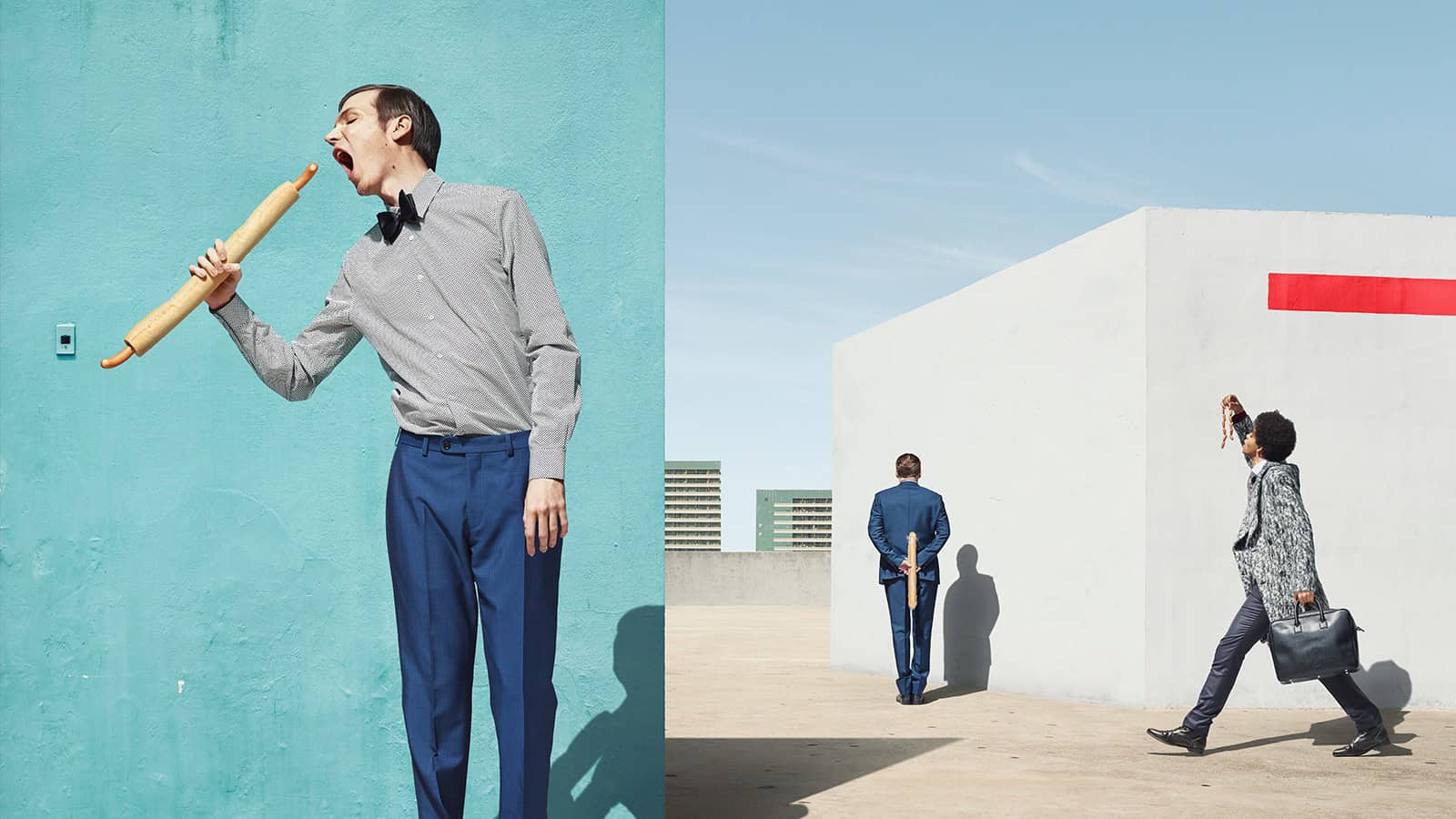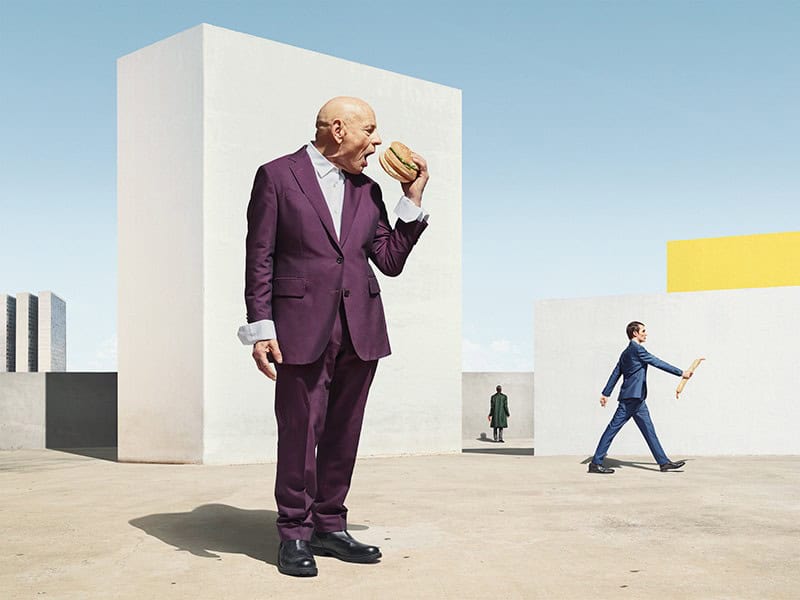Mostly plants, not too much
A philosophy about how to dine with reverence challenges us to go back to a place in time where food is sacred
by Laura Pezzino

The trajectory of an entire life can be changed by the most insignificant events, such as being forced to share the produce from your vegetable garden (the fruit of your hard work and the cause of your backache) with an obstinate woodchuck. In the ‘80s, Michael Pollan — grandson of a Jewish Russian immigrant who arrived in America in 1917, started his New York adventure selling potatoes on the Lower East Side and ended it as a successful businessman with a passion for weekend gardening — was executive editor of Harper’s magazine. If it had not been for his grandfather, who taught him to love nature, Pollan would probably not have decided to leave his brilliant career in the city that never sleeps, to move, with the complicity of his wife (painter Judith Belzer), to a ramshackle farm in Connecticut. Right there, next to it, was a plot that became a vegetable garden, and the scene of the turning point of his life (and successful career): A war against that insolent woodchuck.
One day, in the grip of the fury that besets all farmers when they grapple with an enemy besieging their land, Pollan had decided to sprinkle the annoying rodent’s lair with gasoline and burn it, when another thought flitted through his brain, “Am I not taking the same ‘hegemonic’ approach to nature as those Americans who think ‘how dare these inferior creatures get in the way of what I want?'” From that moment on, everything changed for him. Or rather, in the words of one of his spiritual fathers, transcendentalist philosopher Henry David Thoreau, “Things do not change, we change.”
Today, Michael Pollan is one of the most influential nature writers in the world. In 1991, the woodchuck inspired him to pen the essay Second Nature — which is more a meditation on the environment we live in than a manual for wannabe horticulturists. He followed it with The Omnivore’s Dilemma and In Defense of Food which immediately became a point of reference for people who believe a different approach to land, agriculture, and food, are not only possible but could turn out to be fundamental to ensure a dignified future for humans. “I don’t know if there is a link between food and the vision of a hypothetical ideal society,” Pollan admits, “but I can say that for me, Utopia is this: food — grown, prepared, and eaten with reverence.”

Since what we eat reflects the ideological structure society is based on, over the centuries, food has taken on various values: a ‘eucharistic’ symbol, a synonym of sophistication in the ideals of the Enlightenment, a return to nature for Romantics, a symbol of hope in socialist Utopias, and a sign of prosperity in the society of abundance. “In every Utopia worthy of that name,” Pollan says, “there has to be extraordinary and significant food, because food is an essential component of living a ‘beautiful life’.”
In the Oscar-winning documentary Food Inc., director Robert Kenner analyzed industrial food production mechanisms in the United States, and two assets in particular: corn monocultures, and cattle farming. Kenner started from the premise that even though over the last 50 years, the way we eat has changed more than in the 10,000 prior, and that almost all food comes from industrial production, rural scenes continue to be portrayed in its cultural representations. On this occasion, Michael Pollan, who participated in the docu-film, spoke of a curtain, “A curtain has been deliberately lowered between us and where our food comes from, because they do not want us to know the truth: if they knew, consumers would not continue to buy. It is a matter of connecting the dots. When we buy something at the supermarket, we see its packaging, but what we don’t see is the combination of processes that composed it, which can be followed in reverse to the starting point. There is a connection between the fact that we cultivate a lot of corn, the cheap food, and such high levels of diabetes.”
Pollan’s mission, starting with the journalistic inquiry unleashed by The Omnivore’s Dilemma, became lifting the veil from the production line that the food industry deliberately keeps hidden. He begins with a simple question: “What should we have for dinner?” Pollan examines the three main food highways that today feed humankind: the industrial one, the organic or alternative one, and the traditional one, based on hunting and gathering. “Three deeply diverse systems that nonetheless serve more or less the same purpose: to connect what we eat with the fertility of the land and solar energy,” he explains. “It might seem strange, but even a jar of Nutella has a connective role between us and nature. As ecology teaches us, everything is intertwined with everything else.” This holistic approach — from the land to the consumer — enables Pollan to explore the material and psychological repercussions of nutritional policies on us omnivores.
In The Omnivore’s Dilemma Pollan prepares the ‘perfect meal’ following specific rules: every ingredient has to be either hunted, gathered, or grown with your own hands; there has to be at least one element from each natural kingdom (animal, vegetable, fungi, mineral); everything has to be in season; and you have to cook everything yourself. But, is it possible, in 2020, to make a similar kind of meal in our lives that are so full of commitments? Pollan is open to the possibility: “Actually, my intention was not to propose a practical solution suitable for everyone, not least because if we all started hunting and gathering indiscriminately, we would end up destroying the planet and its weakest species. But having this kind of experience once or twice in one’s life could have a huge impact and change the way we live, reminding us how much the act of eating connects us to other species, but also the ancient version of ourselves. When you hunt and procure food on your own, the sacredness of food becomes tangible — more than a practice the perfect meal is an idea.” It is no coincidence that the positive approaches Pollan examines include the Slow Food movement. Founded in Italy by Carlo Petrini in 1986, it has spread internationally. It began as a reaction to the prevalence of fast food and junk food; its objective is to treat eating a meal as pleasure. “Ever since I learned of their existence,” he adds, “I have believed Slow Food had the right idea. It combines a spontaneous appreciation for pleasure with social justice and sustainable agriculture, challenging the idea that is deeply rooted at least in America, that well-being, and thinking and acting well, are mutually exclusive concepts.”

Nearly 15 years after The Omnivore’s Dilemma was published, many things have changed, overall for the better. Above all, consumer awareness has changed. Pollan says, “The market for products from alternative production systems is taking huge strides. People are far more knowledgeable about where the food they buy comes from, whereas 20 years ago almost nobody cared. But the problems I was talking about, in particular, monocultures and the logic of heavily processed industrial food, are still unresolved.” The challenges ahead in terms of food policy will progress hand in hand with those of ecology and climate change. “The relationship between food and climate was unknown 20 years ago,” Pollan explains, “In 2007, for example, not even Al Gore’s documentary An Inconvenient Truth mentioned it. Now, however, consumers know that eating meat hugely impacts climate change. Recently, Al Gore himself revisited these issues, emphasizing the positive impact regenerative agriculture — and, in general, cultivation techniques that enable us to benefit from the properties of the soil without exploiting or impoverishing it – could have to mitigate, and even reduce the quantity of CO2 in the atmosphere.” Another point on the agenda is education, “It is difficult to change the habits of adults.” Pollan says, “That is why nutritional education for children has become fundamental, and it must cover the whole cycle: growing, cooking, and eating. We also have to grow plants without impoverishing the soil, and reducing waste. Therefore, school policies should be accompanied by solid actions to support farmers. By this, I mean incentives aimed at making it clear that it is not enough to produce: we have to look after the land at the same time.” One last decisive point, according to Pollan, concerns the categories of our daily language: in The Omnivore’s Dilemma he told us how a simple change of our language (using the word ‘food’ instead of ‘agriculture’) brought urban communities closer to the topic, “Our ways of saying things support new ways of thinking. The content is important but so is the frame. People who live in cities do not feel connected to the source of the food they eat, so words and stories can help bridge the gap.”
So, what should we have for dinner? Pollan’s answer remains the one that he himself transformed into An Eater’s Manifesto, and which he included in the pamphlet In Defense of Food, “Don’t eat anything your grandmother wouldn’t recognize as food.” In other words: “Eat food, mostly plants, not too much.”



